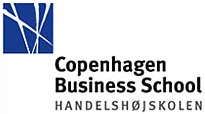No 13-2006: Social Preferences and Labor Market Policy
Trine Filges, John Kennes, Birthe Larsen and Torben Tranæs
Additional contact information
Trine Filges: Department of Economics, Copenhagen Business School, Postal: Department of Economics, Copenhagen Business School, Solbjerg Plads 3 C, 5. sal, DK-2000 Frederiksberg, Denmark
John Kennes: Department of Economics, Copenhagen Business School, Postal: Department of Economics, Copenhagen Business School, Solbjerg Plads 3 C, 5. sal, DK-2000 Frederiksberg, Denmark
Birthe Larsen: Department of Economics, Copenhagen Business School, Postal: Department of Economics, Copenhagen Business School, Solbjerg Plads 3 C, 5. sal, DK-2000 Frederiksberg, Denmark
Torben Tranæs: Department of Economics, Copenhagen Business School, Postal: Department of Economics, Copenhagen Business School, Solbjerg Plads 3 C, 5. sal, DK-2000 Frederiksberg, Denmark
Abstract: We find that the main featues of labor policy across OECD countries can be explained by a simple general equilibrium search model with risk neutral agents and a government that chooses policy to maximize a social welfare function. In equilibrum, policies are chosen to optimal redistribute income from advantaged to disadvantaged workers. A worker can be disadvantaged in the sense that they may have less ability to aquire and utilize skills in the workplace. The model explains why passive benefits tend to fall and active benefits tend to increase during the course of unemployment spell. The model also explains why countries that appear to pursue equity spend more on both active and passive labor market programs.
Keywords: na
JEL-codes: G10
30 pages, January 1, 2006
Full text files
7648
- Copenhagen Business School, Department of Economics
- Ordering Working Papers
- Home page for this series
Questions (including download problems) about the papers in this series should be directed to CBS Library Research Registration Team ()
Report other problems with accessing this service to Sune Karlsson ().
RePEc:hhs:cbsnow:2006_013This page generated on 2024-09-13 22:14:19.

